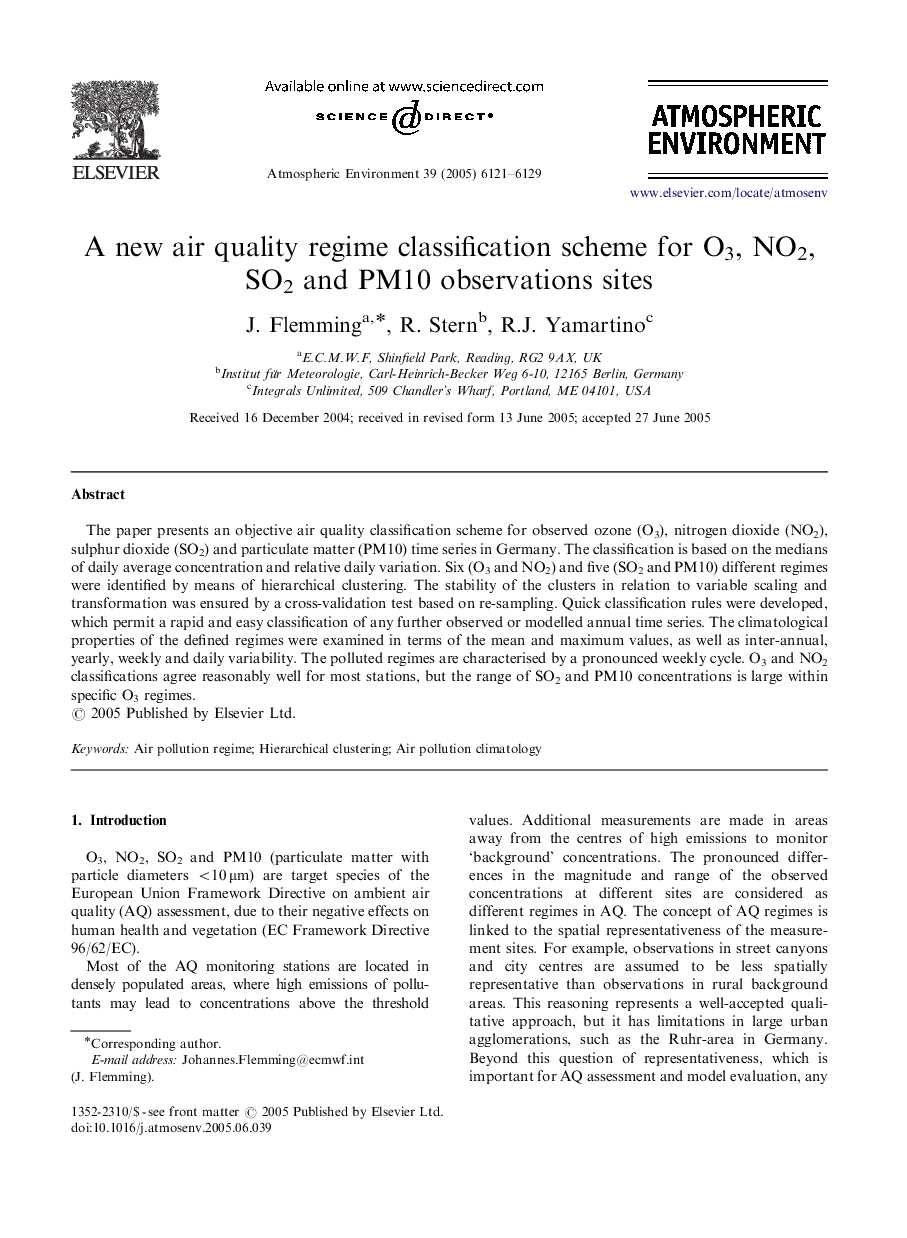| Article ID | Journal | Published Year | Pages | File Type |
|---|---|---|---|---|
| 4444626 | Atmospheric Environment | 2005 | 9 Pages |
The paper presents an objective air quality classification scheme for observed ozone (O3), nitrogen dioxide (NO2), sulphur dioxide (SO2) and particulate matter (PM10) time series in Germany. The classification is based on the medians of daily average concentration and relative daily variation. Six (O3 and NO2) and five (SO2 and PM10) different regimes were identified by means of hierarchical clustering. The stability of the clusters in relation to variable scaling and transformation was ensured by a cross-validation test based on re-sampling. Quick classification rules were developed, which permit a rapid and easy classification of any further observed or modelled annual time series. The climatological properties of the defined regimes were examined in terms of the mean and maximum values, as well as inter-annual, yearly, weekly and daily variability. The polluted regimes are characterised by a pronounced weekly cycle. O3 and NO2 classifications agree reasonably well for most stations, but the range of SO2 and PM10 concentrations is large within specific O3 regimes.
